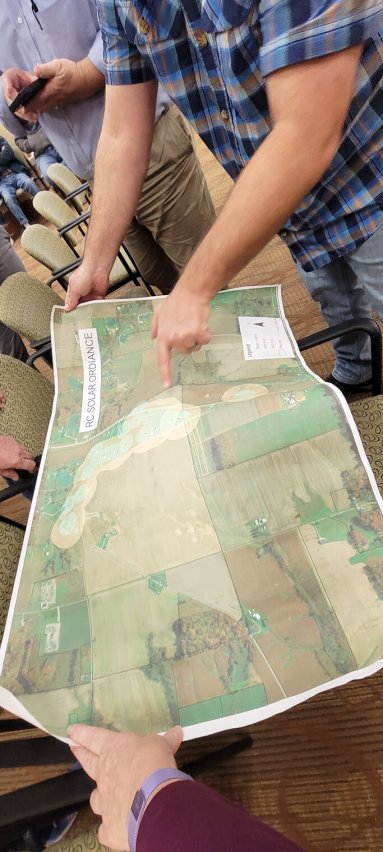Solar dispute still on the county agenda

HarleyJo Kennedy Photo
As the year closes, all businesses, and most individuals, are facing “end-of-year” deadlines. The Ripley County Commissioners Council are no different.
As many have followed, this year in Ripley County, solar energy and solar energy systems (SES) on a commercial level have been introduced and discussed.
Unfortunately, there are no easy answers and “we will not be able to please everyone. … some people are going to voice disagreement with any plan we put forth.” says Chris Schmaltz, Ripley Co. Commissioner. It is an indicated and accepted point-of-view that one ordinance cannot possibly please everyone’s invested interest. Finding a balance is crucial.
Mark Horstman, Ripley County Commissioner and Ripley Co. Commission President, has conflicting personal opinions about the project. He is most concerned with protecting all his constituents.
Horstman feels that green energy will be implemented. However, Horstman wants to protect the rights of the individual landowners to utilize and “farm” their land in any way they desire. He also states the need to balance that with the common good of nearby privately owned residences.
Kendall Hankins, Ripley County Commissioner, had a detailed map made using GIS (geographic information system) to show the properties in contention and the surrounding landowners with concerns. This GIS generated map is for information purposes only and in no way represents a legal or “official” depiction of the proposed SES project.
This map (see picture) shows the surrounding privately-owned, farming acreage. It also indicates the homes of the residents that prefer SES go somewhere else, or at least be screened “appropriately.”
The smaller “green” circles indicate where a 250-foot buffer area would lie. The larger, orange, outer circles indicate where a 500-foot buffer would be laid.
“Appropriate” screening is outlined in the proposed ordinance as “native” and/or “native pollinator” as approved by Purdue University for this specific area and/or other accredited entity. If the property is not appropriate for either of these habitats, the exclusionary evidence is required and an alternate plan to be approved by the BZA (Board of Zoning Appeals) and native accredited entities.
Also, it is required by the ordinance for the SES company to maintain, have a plan of maintenance, and document on-going maintenance to prevent noxious weeds and invasive species “for the life of the SES.”
The main point of controversy for these SES projects are screening and buffer areas. The proposed ordinance, now accepted with amendments to be negotiated, requires a 250-foot buffer area from the “outer wall of any residential structure in adjoin

